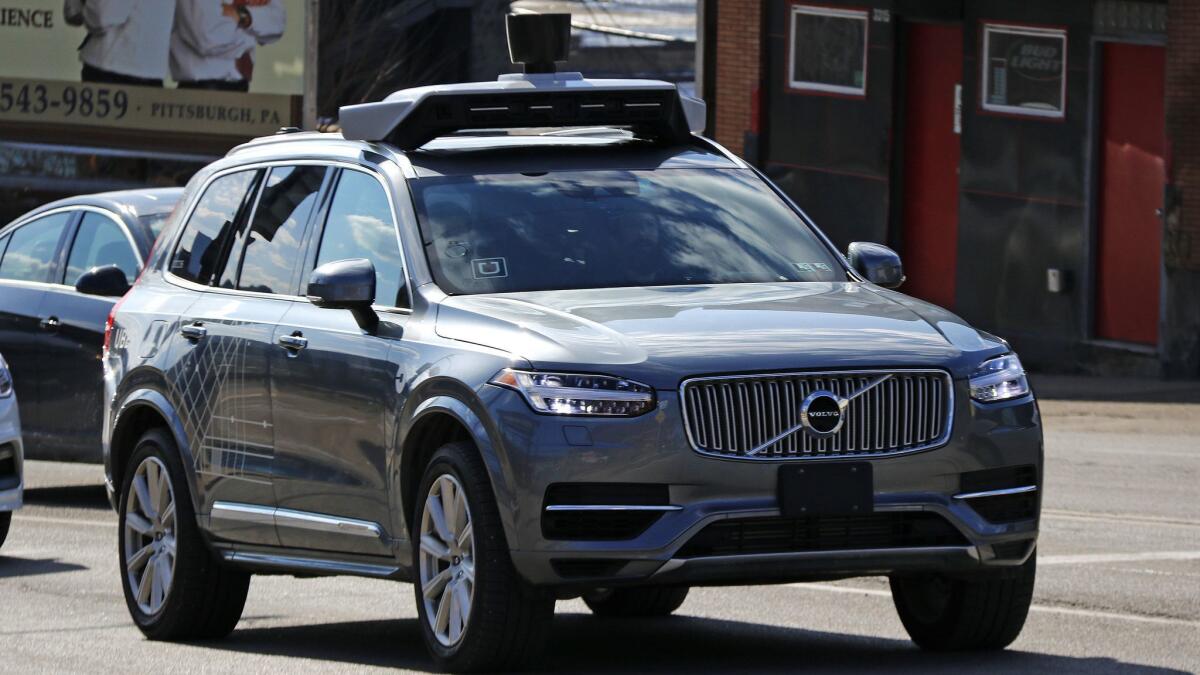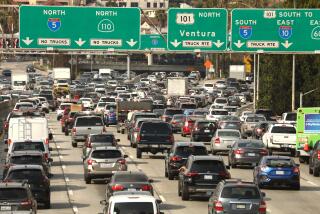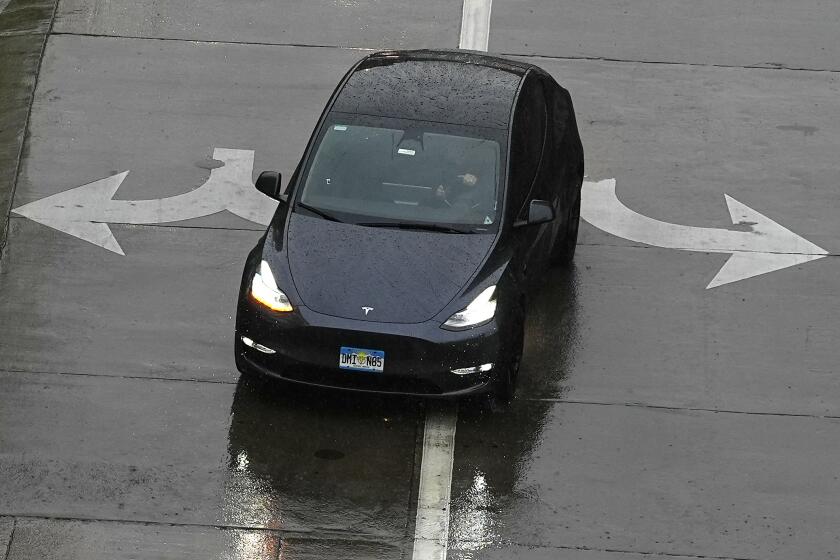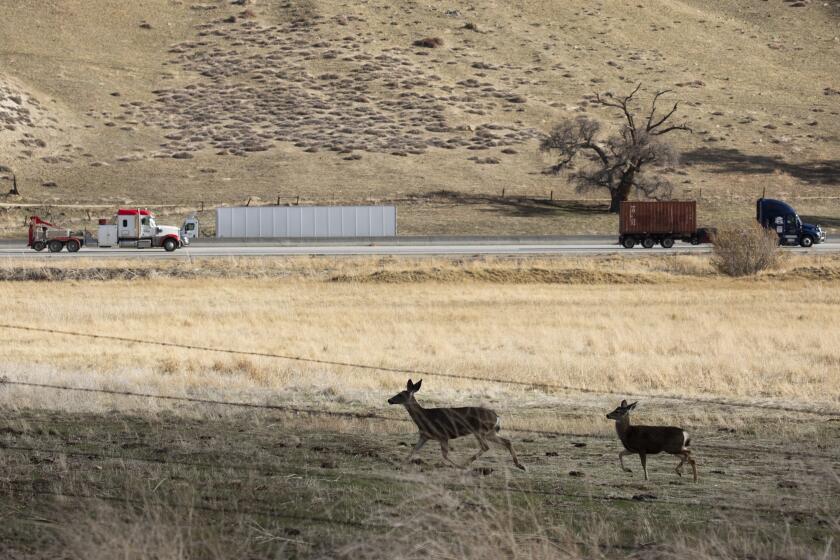Uber is testing self-driving cars on city streets again, 9 months after deadly crash

Nine months after one of Uber’s self-driving cars misidentified and killed a pedestrian in Arizona, the ride-hailing giant said it began testing on public roads again Thursday. It began in Pittsburgh and is also preparing to resume in San Francisco and Toronto.
Uber’s technological and management problems — and their deadly consequences for a 49-year-old woman pushing a bike across a dark street in Tempe, Ariz. — had presented policymakers and the broader self-driving industry with an almost perfect test case for a question that is rarely articulated explicitly but hovers just beneath the surface for some driverless vehicle advocates.
Given the more than 37,000 people who die annually on U.S. roads — and the more than 1.3 million killed every year around the world — how many deaths are acceptable in the quest to build and popularize technologies to replace flawed human drivers?
The answer, it’s clear from Uber’s move Thursday, is more than one, though how much more remains to be seen.
Uber’s self-driving Volvo SUV detected Elaine Herzberg, who was crossing outside a sidewalk, six seconds before the fatal collision in March. But Uber’s technology classified her as “an unknown object, as a vehicle, and then as a bicycle with varying expectations of future travel path,” federal safety investigators said in a preliminary report.
Uber also had shut off the Volvo’s automatic emergency braking feature, since it complicated driverless testing. And its backup safety driver, whose job was to seize control when the technology failed, was streaming a singing competition on her smartphone and didn’t try to slow the vehicle until after it hit Herzberg.
Uber spent the intervening months scouring its systems — software and human — for shortcomings, and the San Francisco company says it has taken numerous steps to fix them before what it says is Thursday’s tightly limited relaunch.
Initially, only a “small handful of cars” will operate, and they will be limited to daylight hours on weekdays and to driving in the area between Uber sites in Pittsburgh’s Strip District, the company said, though those limits will loosen over time. And it said it will not pick up passengers in the vehicles “for the time being.”
Uber also said it has been putting its cars through tougher challenges on test tracks and better training new backup drivers after laying off old ones. There will be “real-time driver monitoring” during self-driving operations in Pittsburgh, it said. Cameras will also be trained on safety drivers as the vehicles are driven manually in San Francisco and Toronto to prepare for restarting autonomous testing in those cities.
Uber also said Volvo’s automatic emergency braking will be “activated at all times.”
“To raise the bar for system performance, we’ve reviewed and improved our testing program to ensure that our vehicles are considerate and defensive drivers. Before any vehicles are on public roads, they must pass a series of more than 70 scenarios without safety-related failures on our test track. We are confident we’ve met that bar,” said Eric Meyhofer, head of Uber Advanced Technologies Group, which is based in Pittsburgh.
“Developing self-driving technology is one of the biggest technical challenges of our time. If successful, these vehicles have the potential to make our roads safer and transportation more affordable for everyone,” Meyhofer said.
Following the recommendations of an outside safety review that included Christopher Hart, the former chief of the National Transportation Safety Board, Uber says it has laid the groundwork for creating a lasting “safety culture.” It created, for example, an internal tip line for employees to report safety concerns and ensure they’re addressed. It also funded researchers working to spur development of independent driverless safety tests.
But skepticism remains among the public and some industry experts.
Bryant Walker Smith, an assistant professor of law at the University of South Carolina, said: “Uber’s stock response to serious allegations of past issues includes the statement that ‘We have every confidence in the work that the team is doing to get us’ to safe deployment.”
In December, the Information, a tech industry news website, published an internal Uber email, sent days before the fatal Tempe crash, that warned of too-frequent crashes and serious systems and personnel problems, and that was the company’s response.
“I don’t think ‘every confidence’ is appropriate. We need more circumspection and second-guessing,” Smith said. He said he was “glad that they actually asked for permission” from Pennsylvania transportation officials to resume on-road testing, since “earlier they suggested they might not.”
Uber’s corporate reputation was defined early on by its aggressive tactics and a seek-forgiveness-not-permission kind of approach.
Timothy McNulty, spokesman for Pittsburgh Mayor Bill Peduto, said the city and Uber “have been in regular communication about their safety upgrades and we’re pleased they sought the voluntary testing approval from the state.”
“As they have accepted established state guidelines, demonstrated transparency, and conformed to our expectations in addressing the unique conditions of a complex urban environment, the city is satisfied that self-driving testing operations by Uber will not introduce an increased level of safety risk in Pittsburgh,” McNulty said.
Most Americans in opinion surveys say they wouldn’t ride in a driverless car, a sentiment hardened among many by the fatal Uber crash even as early self-driving leader Waymo launched a commercial service this month only miles from where Herzberg was killed.
Federal regulators have taken a largely laissez-faire approach to self-driving cars, suggesting companies provide voluntary information about their safety practices.
While Hart was still head of the NTSB, he said in 2016 that automation was the best way to improve road safety but that the transition would include deadly incidents.
“There will be fatal crashes, that’s for sure,” Hart said at the time, but “this train has left the station.”
Laris writes for the Washington Post.






